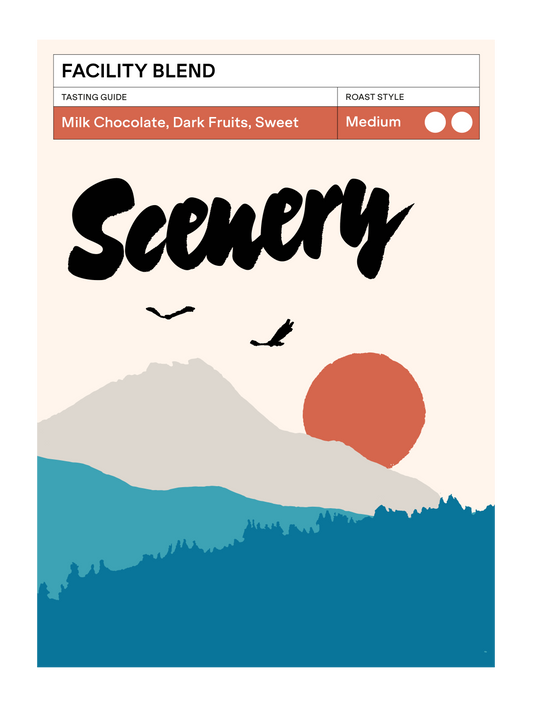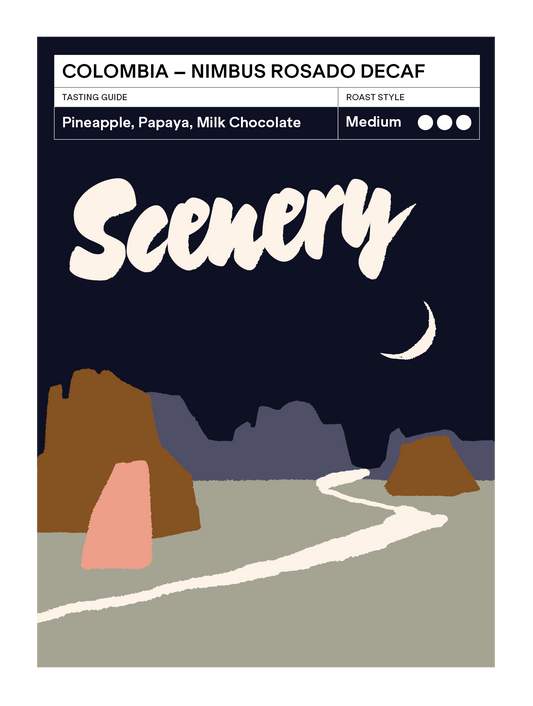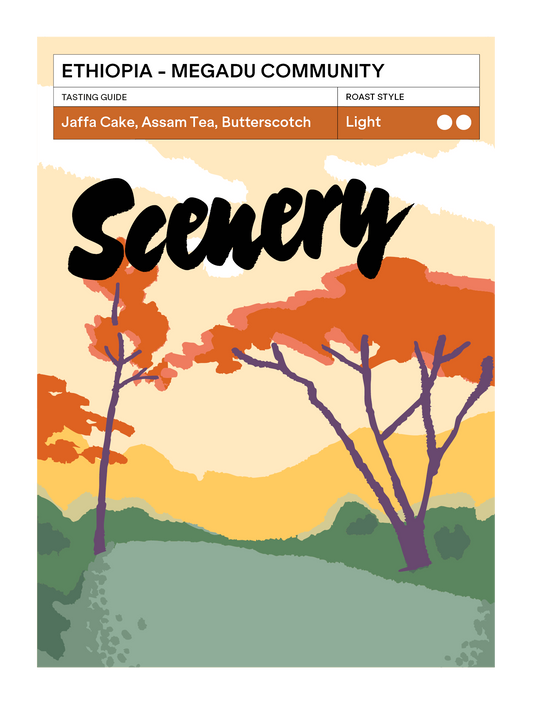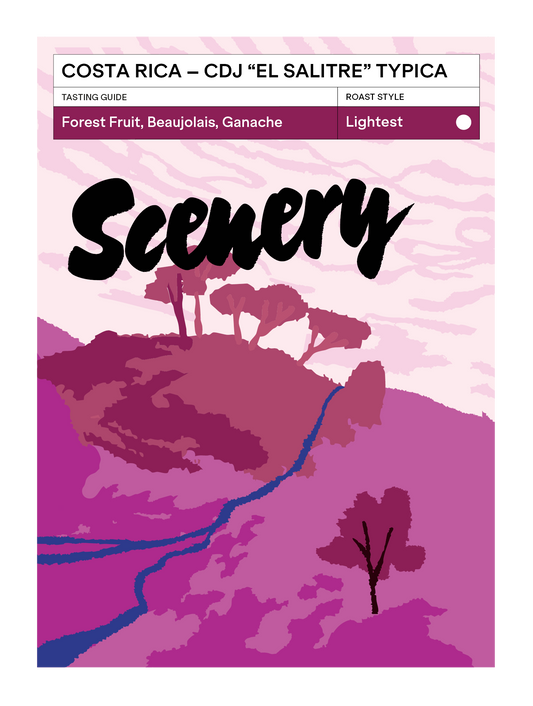Gilcimar's Obata lot ran from 05/07/2023 to 09/08/2023.
Hailing from a farm our co-founder Alex visited in 2019, we couldn’t be happier to launch with producer Gilcimar’s coffee as one of our opening single origins. The region of Montanhas do Espírito Santo has a combination of factors that produce unique, flavourful coffees, of which Gilcimar’s coffee is an excellent example.
Brew Guide:
Best Brewed with: Filter
Roasted lighter, this coffee defies expectations for a Brazilian cup profile. Try a 1:17 (or 58g/L) ratio when brewing filter with water just off boil. If pulling Espresso, you’ll need a more open ratio such as 18g of coffee in for 42g of liquid espresso out, in around 32s
We’re tasting sticky toffee pudding, redcurrants and pomelo in this lot - an intense sticky sweetness, density of flavour and an acidity that more befits a higher altitude coffee.
Traceability:
Country of Origin: |
Brazil |
Region: |
Espírito Santo |
Farm: |
Sitio Bateia |
Variety: |
Obata |
Elevation: |
1020 - 1200 MASL |
Process: |
Washed |
Import Partner: |
Osito |
The Story
Gilcimar farms in the state of Espírito Santo, which is located on the South-Eastern coast of Brazil, just north of the state of Rio de Janeiro. Espirito Santo has a combination of factors that make it truly unique for coffee production - it is divided from the state of Minas Gerais by the Serra do Caparaó mountain range (including Brazil’s third highest mountain, Pico da Bandeira). The hilly topography extends down in either side of the Caparao mountains, providing ideal growing conditions for higher quality coffees. But Espirito Santo, being on the Atlantic facing side of the mountains has a climactic advantage - the humidity, cooler sea air and rains delay cherry maturation and allow for more interesting complexity to develop in the fruit.
But this was not always a feature - the region was previously known for defects and mainly robusta production, due to the issues the humidity and rain would cause in the drying process. The advent of specialty style processing, including parabolic/covered drying tents (think Polytunnels) allowed producers to control the drying process and prevent defects such as mould or rio. Producers in Espirito Santo can even produce washed process coffees with high acidity and complexity, something that is mostly not possible in the majority of coffee production in Brazil (typically, the end result would be very flat, nutty, hollow and simple).
Finally, due to the hilly & steep terrain as well as the history of emigration to the region, the majority of coffee farms in Espirito Santo are smallholder owned, typically 5-20 hectares, and usually run by single families, which means as coffee buyers we can get full traceability as to who has produced our coffee. We’ve chosen a regional blend of Espirito Santo coffees to be the main component in the Facility blend for these reasons.
Gilcimar is an exemplary example of a producer from this region. He’s quality focused and has won awards for his coffee, and produces consistently excellent coffees, including washed process. He runs his farm with his brother-in-law Jose Fortunado, and is a third generation coffee farmer.
His farm has 2 plots, one with majority Catuaí and Catucai varieties, and the second with Obata (a Brazilian variety that is a cross between Timor Hybrid and Villa Sarchi, which is both high yielding, disease resistant and has high cup quality). His typical production will be 200 bags of coffee, with 70 reaching speciality grade (and prices) with the remaining 130 being sold on the commercial market. As with many smallholder farmers in the region, it is not a lack of quality that prevents them from selling more of their production as speciality, but the high cost of labour in paying for pickers and lack of available pickers. He separates out each day’s picking and takes samples to the local exporting offices, who will cup the results. He keeps a track of those lots which score higher and careful notes as to what occurred during picking, processing and drying, allowing him to continuously improve, and to sell the higher quality day lots for a better price.
This lot comes from the second plot, and notably is washed. Gilcimar pulps his coffee, soaks & wet ferments it in a tank for 12 hours before washing. He then dries it slowly on raised African beds in a parabolic drier with controlled ventilation, taking 8 to 12 days ensuring the coffee is stable and that the quality will be preserved.

![[02] Brazil - Gilcimar Spavier [CROP 22/23 ARCHIVE]](http://scenery.coffee/cdn/shop/articles/Brazil_shopify.png?v=1714043476&width=1100)
![Colombia - Quebraditas Ají Thermal Shock Washed [FESTIVE SPECIAL] 🎄](http://scenery.coffee/cdn/shop/files/colombia_quebraditas_aji_shopify.png?v=1764358600&width=533)






![Colombia - Quebraditas Sidra Thermal Shock Washed [25/26]](http://scenery.coffee/cdn/shop/files/colombia_quebraditas_sidra_2526_shopify.png?v=1765544630&width=533)



![Colombia - Luz Ángela's Chiroso [25/26]](http://scenery.coffee/cdn/shop/files/colombia_luz_angela_chiroso_2526_shopify.png?v=1764359755&width=533)


![Colombia - El Jaragual Rosado [25/26]](http://scenery.coffee/cdn/shop/files/el_jaragual_rosado_2526.png?v=1757075842&width=533)